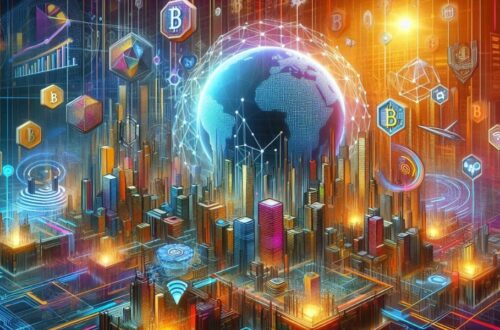In this guide, we’ll explore the various factors that influence the price of giant mascot robots, the different types of robots available, and what you can expect in terms of costs when acquiring one.
1. Base Costs of Giant Mascot Robots
The price of a giant mascot robot can vary significantly depending on its size, functionality, materials, and level of customization. On average, you can expect to pay anywhere between $20,000 and $200,000 or more for a fully functional giant mascot robot.
For simple models with basic movements, such as waving or walking, the cost will generally be on the lower end. On the other hand, highly sophisticated robots with intricate mechanical systems, advanced artificial intelligence (AI), and the ability to perform complex tasks will push the price toward the higher range.
Breakdown of Typical Costs:
- Entry-Level Giant Mascot Robots ($20,000 – $50,000): These are more basic models with limited movement and interaction. They may include motorized arms, heads that can rotate, and basic sound effects. These robots are suitable for small events or as static promotional figures.
- Mid-Range Giant Mascot Robots ($50,000 – $100,000): Mid-range models offer more advanced motion capabilities, multiple points of articulation, and increased interactivity. These robots might have facial expressions, fluid movements, and pre-programmed routines. They are ideal for larger events, corporate launches, and dynamic entertainment settings.
- High-End Giant Mascot Robots ($100,000 – $200,000+): These top-tier robots come with advanced AI, intricate mechanical parts, and cutting-edge design. They often feature complex animations, speech recognition, and the ability to interact with people in real-time. High-end mascot robots are often custom-built for large corporations, major sporting events, or theme parks and may include special features like augmented reality integration or full-body motion capture systems.
2. Factors That Influence the Price
Several factors can affect the overall cost of a giant mascot robot, from design specifications to the level of customization required. Understanding these factors can help you budget accordingly and make an informed decision when considering the purchase or rental of a mascot robot.
a. Size and Scale
The size of the mascot robot is one of the most significant factors affecting its price. Larger robots require more materials, larger components, and more powerful motors to handle their weight and movement. As a result, a robot that stands 10 feet tall will cost significantly more than one that is only 6 feet tall.
Additionally, the structural complexity of the robot—whether it needs to be lightweight for portability or robust for heavy-duty use—will influence the materials and design processes involved, affecting the final price.
b. Level of Customization
Custom-built robots are more expensive than off-the-shelf models. If your organization requires a mascot robot that reflects a specific brand identity, custom character, or logo, the development and manufacturing process will require additional time and expertise. Customization can include:
- Unique character design and sculpting.
- Special branding elements such as logos or colours.
- Custom outfits or costumes.
- Specific movement patterns or gestures.
- Sound effects or custom voiceovers.
The more detailed and customized the robot, the higher the price, as this requires additional design work, programming, and testing.
c. Movement and Functionality
The robot’s range of motion and interactive capabilities also influence the cost. Robots with basic motor functions (e.g., moving arms or head rotation) are less expensive to manufacture than those capable of walking, dancing, or performing choreographed routines. Additionally, robots that are equipped with sensors, facial recognition, speech recognition, and AI for real-time interaction will cost more due to the complexity of their software and hardware systems.
Some high-end models can even be controlled remotely or autonomously, with programmable features that allow them to adapt to their environment. These advanced capabilities significantly increase the robot’s price.
d. Materials and Durability
Giant mascot robots price must be durable enough to withstand frequent use, transportation, and exposure to various environmental conditions, particularly if they are used outdoors. Materials such as fibreglass, aluminium, and high-quality plastics are commonly used in their construction. The choice of materials affects not only the durability but also the weight of the robot, which can impact both mobility and cost.
More premium robots may use lightweight, aerospace-grade materials for ease of transport and extended durability, while others might opt for reinforced materials for heavy-duty use, all of which add to the final price.
e. Technology and Features
The integration of advanced technology significantly drives up the cost of giant mascot robots. These features include:
- AI and Machine Learning: Robots that can learn and adapt based on human interaction require sophisticated AI systems, which add to both development time and cost.
- Voice Recognition and Speech: If the robot can engage in conversations, understand voice commands, or provide custom responses, additional software and hardware are required to handle speech recognition and processing.
- Touch Screens or AR/VR Integration: Some robots include touch screens, allowing for interactive experiences, or augmented reality (AR) features, which require additional technology.
- Remote Control or Autonomous Functioning: Robots that can be controlled via remote or operate autonomously without human intervention are equipped with complex control systems, adding to the overall cost.
3. Renting vs. Purchasing a Giant Mascot Robot
If your budget doesn’t allow for purchasing a giant mascot robot, renting one is another option. Renting can be a more cost-effective solution for short-term events or one-time promotional activities.
Cost of Renting:
- Basic Robot Rental ($2,000 – $10,000 per event): These are entry-level mascot robots with limited customization and functionality. They are typically rented out for trade shows, conventions, or small events where advanced features aren’t necessary.
- Mid-Range Rental ($10,000 – $25,000 per event): Robots in this price range offer more dynamic movement, customization, and interaction. They are suitable for larger events, such as product launches, corporate events, or music festivals.
- High-End Rental ($25,000+ per event): Top-tier rental robots feature the most advanced technology, from AI to augmented reality. These robots are often used at major events like sporting championships, film premieres, and international exhibitions.
The advantage of renting is that it allows you to access the latest robot models without the upfront costs of purchasing, though recurring rentals can add up over time if used frequently.
4. Additional Costs to Consider
Beyond the base price of the robot, there are several additional costs to consider when planning your budget.
- Shipping and Handling: Depending on the size and weight of the robot, shipping costs can be substantial, especially for international deliveries.
- Maintenance and Repairs: Regular maintenance is necessary to ensure the robot’s functionality. For more advanced robots, repairs and software updates may be required over time, which adds to the overall cost.
- Storage and Transportation: If you own a giant mascot robot, you will need to account for storage and transportation when it’s not in use, particularly for large, heavy models.
- Operating Crew: Some robots require trained operators to control or monitor them during events. This may include technicians for setup, programming, and maintenance.
Conclusion
The price of a giant mascot robot depends on several factors, including size, customization, functionality, and the integration of advanced technology. Whether you’re purchasing or renting a robot, it’s important to carefully consider your needs and budget to make the most informed decision. While these robots can be expensive, their ability to captivate audiences, promote brands, and create unforgettable experiences can make them a worthwhile investment for organizations looking to make a significant impact.
By understanding the various factors that influence price, you can ensure that you choose the right giant mascot robot to suit your goals and event needs while staying within your budget.





